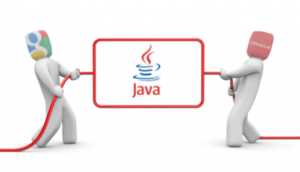Category Archives: Uncategorized
And look what’s happening to cable TV…
Winning the battle and losing the war …
Here’s a quick synopsis of the battle between Napster and the music industry … and some of the unforeseen consequences
https://www.theguardian.com/music/2019/may/31/napster-twenty-years-music-revolution
https://www.cbsnews.com/news/after-napster-the-music-industry-winds-up-humming/
https://www.newstatesman.com/2019/01/is-the-music-industry-dead
The Name, Image and Likeness Debate…
By Alexandra Ursino
Background Information
Name, image, and likeness (NIL) are typically seen as the right of publicity, which is a right that provides people with a cause of action against anyone who makes a commercial use of their name, image, likeness, or other indicia of identity.”
In October 2019, California Governor Gavin Newsom signed the Fair Pay to Play act into Law the legislation went against NCAA guidelines and allows college athletes in the state to profit from their name, image, and likeness beginning in January 2023. Several other states bean to draft or propose similar legislation in 2019.
At the end of October, the NCAA Board of Governors voted unanimously to allow student-athletes to be paid for the use of their NIL once rules are decided on the opportunities. The Board asked each division to create rules between now and January 2021.
According to Sports Illustrated, two companies are at the forefront of this new industry and have already developed business models based on potential NIL benefits.
TWO COMPANIES
Studentplayer.com is a crowdfunding platform that is similar to gofundme.com and allows anyone to donate funds to a specific collegiate athletic program or player position. The people who can donate include college sports fans, alumni, and large companies. The point is that if teams and athletes accept the money when the NIL rules permit it, players will make a video or social media post in exchange for endorsing an advertiser, company, or studentpplayer.com itself.
The founder of the company, Zachary Segal, says that “the website will “democratize” the college sports economy “and compared the process to making political campaign contributions. “All donations, listed by institution and sports team will be made public on the website.
The website has already taken off. A $10,000 donation has already been made by Tocowarranty.com, which is an auto repair insurance company. The company has donated to 10 Division I football teams for each of their starting quarterback positions, including LSU, Clemson, and Oklahoma. Minnesota State University at Mankato requested its institution be taken off the website due to concerns about how prospective donations could impact the eligibility of players under current NCAA rules for NIL benefits. The founder believes that the university is “mistaken” because the funds will be held in escrow until regulations and laws are in place that permit college athletes to be paid. A member of Oklahoma’s athletics department stated: “I’ve never seen anything like this” “They aren’t using any of our students’ name, image, and likeness at this time, and why someone would contribute to this is beyond me.” Contributions so far have totaled over $103,000.
Nameimagelikeness.com provides legal representation to athletes. It was started by an Illinois family practice lawyer and former Division 1 men’s basketball player for Saint Louis University. The company is designed to help athletes navigate sponsorship deals and provide other opportunities to profit from their NIL, such as fan autograph exchanges and social media advertising.
The website states that its clients will be given full access to newly available opportunities to monetize their publicity and elevate their status as the admired, elite athletes that they are.
Questions to consider:
- Companies aren’t yet sure about what the state and federal law swill look like, as well as what NCAA guidelines will be. Without this guidance, is it smart to create a business model without any regulatory guidance?
- Can you bet on potential profits that way?
- Would you start a business without knowing the regulatory guidelines or issues?
- What would be the biggest assumptions you make about this new industry?
- Are there any major assumptions these two companies are making?
- How would you compare the two businesses?
Sources
- https://rightofpublicity.com/brief-history-of-rop
- https://nameimagelikeness.com/
- https://studentplayer.com/
- https://www.insidehighered.com/news/2020/01/14/market-rights-college-athletes-name-image-likeness-emerging
- https://www.cnn.com/2019/10/29/us/ncaa-athletes-compensation/index.html
- http://www.ncaa.org/questions-and-answers-name-image-and-likeness
- https://www.si.com/college/2019/10/30/ncaa-name-image-likeness-announcement-takeaways-questions
Working from Home and Beyond
Working Remotely
Perhaps one of the largest new trends in the modern workplace is the ability to work remotely. While work from home (“WFH”) options have been around for quite some time, there is a new trend emerging which promotes “working from anywhere” (“WFA”). Advances in technology and streamlined services have allowed for increased flexibility in the way people work, both inside and outside of the office. According to a 2017 Gallup poll, 43% of employed Americans spend at least some time working remotely every week. While the concept of working remotely is not necessarily new, it has gained quite a bit of traction as employers have begun capitalizing on its benefits. In fact, several recent studies suggest that the ability to work remotely increases productivity. Additionally, WFA and WFH programs might reduce some structural overhead costs. On the employee side, the uptick in remote working options is said to be driven by the increase of Millennial and Gen-Z workforce and changes in the labor culture. Now, WFA and WFH programs are used as a recruiting tactic. As with any major shift in the workplace, there are many benefits and drawbacks that present unique challenges to different employers in different industries.
Harvard Business Review Study: WFO v. WFA
While WFA has grown out of WFH programs, there are some differences in the benefits and challenges presented with a workforce that is located “anywhere”. Harvard Business Review conducted a study in which they studied the effects of a WFA program initiated in 2012. The study followed patent examiners at the USPTO. The focus of the study was to analyze the productivity of these examiners after the switch from WFH options to WFA. The results of this study showed a 4.4% increase in productivity after the switch. Additionally, there was no significant increase in the amount of work revision that needed to take place after the switch. Moreover, there was no indication that the patent quality decreased after the switch. Harvard Business Review estimated that the 4.4% increase in productivity represents up to $1.3 billion in added value to the U.S. Economy. As a fringe benefit of the WFA implementation, the study also observed that there was an uptick among WFA employees relocating to places with lower cost of living. When the WFA employees relocated while retaining their original salary, they effectively gave themselves a raise without any economic impact on their employer.
Companies Capitalizing on WFH and WFA
An interesting feature of this trend is the technology supporting WFA and WFH options. Companies such as Slack and Zoom have streamlined remote communication. Both of these companies have been hugely successful featuring multibillion-dollar IPOs. In addition to streamline communication and remote connection, other companies such as WeWork and Regus have capitalized on creating flexible workspace that can be used to support an alternative workplace configuration.
Benefits of WFH/WFA Option:
- Flexibility
- Continuous Access to Work Materials
- Increased Efficiency
- Increased Productivity
- Health
- Reduced Absenteeism
- Greater Retention of Talent
- Recruitment
- Workplace Content
- Greater Autonomy
Challenges of WFH/WFA Option:
- Organization
- Collaboration
- Miscommunication
- Reduced Oversight
- Less Sense of Community
- Continuous Access to Work Materials
Questions:
- How can Entrepreneurs capitalize on the WFA movement?
- What challenges does the WFA movement present for Entrepreneurs?
- How are law firms reacting to the WFA movement?
- Is WFA good for everyone? If not, why not?
Links:
https://www.entrepreneur.com/article/346848
https://hbr.org/2019/08/is-it-time-to-let-employees-work-from-anywhere
https://news.gallup.com/businessjournal/206033/america-coming-workplace-home-alone.aspx
https://www.entrepreneur.com/slideshow/302413
https://www.entrepreneur.com/article/339613
https://economics.stanford.edu/sites/g/files/sbiybj9386/f/alternative_work_arrangements.pdf
https://www.wired.com/2011/05/microsoft-buys-skype-2/
Google v. Oracle, Fair Use v. Copyright
Issue:
1. Whether copyright protection extends to a software interface.
2. Whether the petitioner’s use of a software interface in the context of creating a new computer program constitutes fair use.
Why it matters: The Supreme Court is considering key questions related to software copyright and fair use — with billions of dollars in damages in the balance. Google claims that the survival of software innovation rests on their long-running copyright battle. Oracle claims a victory will ensure software makers enjoy copyright protections.
If Google Wins: Software development will go on as it does now.
If Oracle Wins: Unclear. Massive disruption? Companies reluctant to take on innovative projects? More patents? More expenses? Essential to protecting innovation?
Procedural Timeline: https://www.eff.org/cases/oracle-v-google
What’s next: The Supreme Court will hear oral argument from the companies March 24.
Questions to Consider:
- Which side are you on and why?
- What is the policy behind fair use?
- What effect will an Oracle win have on innovation? Hinderance or protection?
Sources:
https://www.supremecourt.gov/search.aspx?filename=/docket/docketfiles/html/public/18-956.html
https://www.i-programmer.info/news/193-android/13489-trump-backs-oracle.html
Video:
Escaping the (Legal) Rat Race through Early-Stage Real Estate Investing
 The “Rat Race”
The “Rat Race”
The term “rat race” was popularized in the bestseller “Rich Dad Poor Dad” and refers to an exhausting, repetitive lifestyle that leaves no time for relaxation or enjoyment. It involves subjecting one’s self to a time-consuming job, saddling one’s self with heavy debts, and forcing one’s self to continue working day in and day out at that same job. Individuals in the rat race assume that working at the same job will be better and more profitable in the long term.
The truth is, lawyers are overwhelmingly in the “rat race.” According to the National Association for Law Placement:
- the average number of billable hours required for a first-year associate is 1,892 hours.
- for firms with more than 700 attorneys, the average is 1,930 billable hours.
- to achieve 1,800 billable hours, an associate would need to spend a total of 2,430 hours “at work” (non-billable activities)
- to achieve 2,200 billable hours (and hit the firm bonus), an associate attorney would need to spend a total of 3,058 hours “at work.
For those reasons, lawyers generally “work to live” rather than “live to work.” These long hours impinge on other personal activities and cause undue stress. This post aims to offer a way out of the “rat race” and focuses on the freedoms real estate investing offers.
Getting Started
While there are a number of ways real estate investing can provide passive income (and set attorneys on a course for financial independence) the focus of this blog post is on early-stage investment. After all, many first-year associates do not come out of law school as skilled real estate investors. Here are three ways young attorneys can get into the real estate game:
- Consider House Hacking-house hacking is the easiest way to buy your first rental property. In the bargain, you get to live for free. The traditional house hacking concept is straightforward: you buy a small multifamily (2-4 units), move into one of the units, and rent out the others. Your neighboring tenants’ rent covers your mortgage and other costs. This does require a traditional downpayment, which can be as low as 3.5% (FHA loan) or in some cases 5% (conventional).
- The BRRRR Method-BRRRR stands for buy, renovate, rent, refinance, repeat. In this method, you buy a fixer-upper with a purchase-rehab loan, which does involve a down payment. You then renovate it, refinance the property and pull your original cash back out. This method is better suited to more experienced investors because there is a higher risk that comes with leverage. That said, pulling the original cash out allows you to use it for another property.
- Partners-partners are friends and family seen as possible sources of money for a down payment. For beginners with little or not enough money for a down payment, chances are you know someone who’s looking to diversify and invest some money in real estate. Partnering on a project or rental could be that first foray into real estate investing. Just read the success story of Jonathan Twombly, who left his New York job as an attorney to pursue real estate: https://www.biggerpockets.com/member-blogs/5063/48335-from-miserable-lawyer-to-full-time-real-estate-investor-how-i-did-it
Passive Rental Property Numbers
Here is a brief example of a passive rental property. :
- Property: quadplex with 5% down ($20,500)
- Purchase Price: $410,000
- Mortgage, PMI, Escrow, Taxes, Insurance: $2500/mo.
- Unit 1 Income: $1500
- Unit 2 Income: $1500
- Unit 3 Income: $1500
- Unit 4 Income: $0 (this is the unit you live in)
The rental income from the quadplex is $4500/mo, and the mortgage is $2500/mo, leaving you a surplus of $2000/mo. With this example, you not only live for free but also generate an additional $24,000 in income. For that reason, house hacking–among other investments–is an ideal first step to financial independence.
Sources:
- Kiyosaki, Robert T. “Rich Dad, Poor Dad: What the Rich Teach Their Kids About Money – That the Poor and Middle Class Do Not!” 1st Plata Publishing ed. Scottsdale, AZ: Plata Pub, 2011.
- “10 Ways to Escape the Rat Race Faster with Real Estate investing.” Epic Real Estate
- Liz Brumer-Smith. “6 Ways of Buying Rental Property with No Money Down.”
- Baruch Silvermann. “Beginner’s Guide to Real Estate Investing.” Dec. 21, 2019.
- “BiggerPockets” Podcast
- Jaliz Maldonado. “The First-Year Associate’s Guide to Managing Billable Hours.”
- https://www.youtube.com/watch?v=naZAknwNgkY
Is the way we think about charity wrong?
The Way We Think about Charity is Wrong
https://www.youtube.com/watch?v=bfAzi6D5FpM&feature=youtu.be&t=152
(Most relevant is 2:32-10:28)
From the local mom-and-pop shop to trillion-dollar companies like Apple, the goal of for-profit businesses is typically to make as much money as possible for their stakeholders. For charities, the goal is to help as many people as possible, be it people with cancer, the homeless, people with disabilities, etc. Despite their differences, businesses and charities are, fundamentally, the same in that they seek to improve the lives of their stakeholders. However, in trying to achieve their goals, society expects businesses and charities to operate very differently. The following expectations create a contradiction where we expect charities to tackle massive issues, but we require the charities to be small by restricting their possibility to grow.
- Compensation
- People react negatively when charity workers are compensated at their full market rate, yet we expect charities to attract the best and brightest. For well-qualified individuals, the loss in annual income may be too much to ignore. For example, a Stanford MBA graduate may make $400,000/year working in the for-profit sector, while a similarly qualified individual may make only $85,000/year – 21% of the for-profit worker’s income. As such, a person wanting to make a difference could reasonable choose to work in the private sector and donate $100k per year, still make $300k per year, and been seen as a philanthropist, while the CEO of the receiving charity still makes $86k and struggles to obtain a $10k raise out of the belief that money could better be used toward the cause.
- We do not like the idea that people make lots of money helping other people, yet do not mind when people make a lot of money not helping other people. For example, most people would object to the CEO of a charity making $1 million per year, but do not have a problem with a star athlete making $50 million per year.
- Advertising and Marketing
- As consumers, we accept that companies must market to grow their market share. Big Pharma spends nearly twice as much on advertisements as it does research and development. However, as donors, we do not like to see our donations used on advertising for charity—we want out as much of our money as possible to go directly to the the cause. Charitable giving has remained at 2% of annual GDP for the last 40 years.
- Risk taking
- “When you prohibit failure, you prohibit innovation.”
- As investors, we accept that businesses must take risks, and accept that risks sometimes do not pay off. A failure does not necessarily ruin a company’s reputation. However, as donors, we expect charities to play it safe and only work with tried-and-true methods of fundraising. If a charity invests in a fundraising drive that flops, it ruins their reputation.
- Time
- A private company can fail for years to return a profit to shareholders who wait patiently because they believe in the overall plan. However, charities are not allowed to build for the future; they cannot invest in an organizational infrastructure that will, with patience, better address the cause.
Questions
- In the last 40 years, poverty has dropped from 20% of the population to 12%, and breast cancer mortality rates have dropped from nearly 100% to 23%.
- Does this not suggest that the traditional model of charity is working?
- Should we be expecting more over the course of 40 years?
- Pallota’s organization had 40% overhead. (The average overhead for a charity is 37%, although the public believes it “should” be 23%). After it became publicly known how much went to overhead, affiliates stopped hiring Pallota’s organization to run their charitable events. Subsequently, his sponsors lost 84% of their incoming donations in one year.
- Does overhead really matter when the total amount going toward the cause increases? (i.e. is it not better to have 60% of $100 million (60 million) go towards ending breast cancer than 95% of $10 million ($9.5 million)?)
- How can we expect the charity “market share” to grow without marketing?
- While marketing may increase the total donations an individual charity receives, is it not likely that some of those donations are coming at the cost of donations to other, lower-overhead charities? Does this not decrease the overall amount going to causes?
Resources
https://www.npr.org/transcripts/181693499
https://www.forbes.com/sites/richardlevick/2013/04/08/everything-you-know-about-charity-is-wrong/#374a44514659
https://trust.guidestar.org/why-is-overhead-a-punishable-offense-for-nonprofits
https://ssir.org/articles/entry/persistent_poverty_in_a_smug_meritocracy
https://www.washingtonpost.com/news/wonk/wp/2015/02/11/big-pharmaceutical-companies-are-spending-far-more-on-marketing-than-research/
https://deloitte.wsj.com/cmo/2017/01/24/who-has-the-biggest-marketing-budgets/
Innovation’s Role in the Law
The topic of today’s class revolves around law’s role in innovation, so I decided research the inverse of this question: What role does innovation play in the legal field?
I focused on “legal field,” as it relates to traditional “big law” law firms. I was interested in learning more about how law firms are adapting (or refusing to adapt) to changes in the marketplace and client needs, as well as changes in technology. Ultimately, I wanted to be able to discern what the “law firm of the future” would look like. While uncertainty permeates, I was fascinated by the divergent approaches of various industry leaders.
Some relevant discussions are summarized (and linked) below:
- The rise of Alternative Legal Service Providers has been a source for innovation that traditional law firms are being forced to confront. The role of Alternative Legal Service Providers (ALSPs) continues to grow as both businesses and law firms turn to them more and more frequently. Businesses may leverage ALSPs for many routine legal services and law firms may leverage them for outsourcing certain jobs to ALSPs that would be too expensive and time-consuming to do in-house. Areas in which ALSPs are used include: doc review, contract management, litigation support, and legal research.
- Relevant Sources:
- https://www.paralegaledu.org/alternative-legal-service-providers/ (overview/definition of ALSPs)
- https://cloc.org/wp-content/uploads/2019/07/2019-State-of-the-Industry-FINAL.pdf(p. 20 showing rising popularity in CLOC 2019 study)
- https://finance.yahoo.com/news/us-alternative-legal-providers-market-064551172.html (23% CAGR for ALSPs market)
- https://advance.lexis.com/document/?pdmfid=1000516&crid=7bbe7a01-7874-4060-86f9-d206901b974f&pddocfullpath=%2Fshared%2Fdocument%2Flegalnews%2Furn%3AcontentItem%3A5WM9-V781-JBM3-R0B8-00000-00&pddocid=urn%3AcontentItem%3A5WM9-V781-JBM3-R0B8-00000-00&pdcontentcomponentid=255422&pdteaserkey=sr0&pditab=allpods&ecomp=spnqk&earg=sr0&prid=d44a99bc-6402-4a83-a6a0-02b0ec87f0a4 (access via Lexis username/password; Eversheds Sutherland and Fenwick & West vs. “The Big Four” vs. outsiders).
- Relevant Sources:
- Questions also remain as to what role technology should play within the law firm. One firm, S&C has committed to providing the best technology to its clients and its employees by outsourcing its technological needs. (The Chairman, Shenker, was quoted saying “Let’s focus on what we’re great at and let other people focus on what they’re great at.”). S&C is not alone in outsourcing technology, and also not alone in the large trend of outsourcing non-legal related activities more generally. More and more firms are moving departments and jobs outside the firm entirely. HBR Managed Services serves more than 25% of AM Law 100.
- Relevant Sources:
- https://advance.lexis.com/document/?pdmfid=1000516&crid=8cb080d8-fbc0-46a9-86f1-300da42bb945&pddocfullpath=%2Fshared%2Fdocument%2Flegalnews%2Furn%3AcontentItem%3A5XYW-0XT1-JBM3-R3M8-00000-00&pddocid=urn%3AcontentItem%3A5XYW-0XT1-JBM3-R3M8-00000-00&pdcontentcomponentid=8344&pdteaserkey=sr0&pditab=allpods&ecomp=spnqk&earg=sr0&prid=8001a943-2e92-405a-ac8d-bb239b0dcaf5&cbc=0 (access via Lexis; discussing outsourcing trend as particular to S&C and tech more specifically)
- https://www.hbrconsulting.com/managed-services/ (HBR website)
- Relevant Sources:
- Compare the outsourcing trend of S&C (and others) with the approach of Fenwick and Eversheds Sutherland in creating their own ALSP type departments within the firm
- Relevant Sources:
- Bigger questions remain whether regulations will continue to prohibit the “Big Four” accounting firms will further penetrate the legal field. The Big Four cannot and “do not” currently “practice law” in the United States, but it is clear that relationships between the Big Four and the legal field continue to develop and strengthen.
- Relevant Sources:
- https://news.bloomberglaw.com/us-law-week/big-law-big-four-best-off-when-they-cooperate-panelists-say (discussing role of Big Four in the law and relationships between Big Four and traditional law firms)
- https://www2.deloitte.com/global/en/services/legal.html (are the Big Four really “not practicing law?”)
- Relevant Sources:
When there is no rule of law, cont’d…
And here’s the second article:



